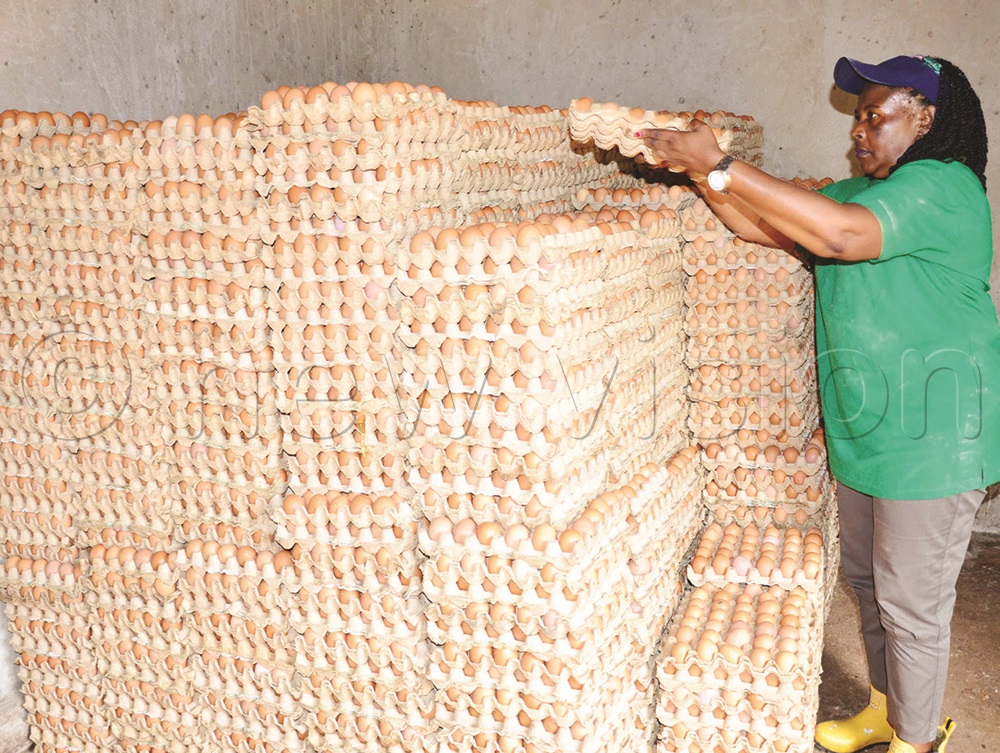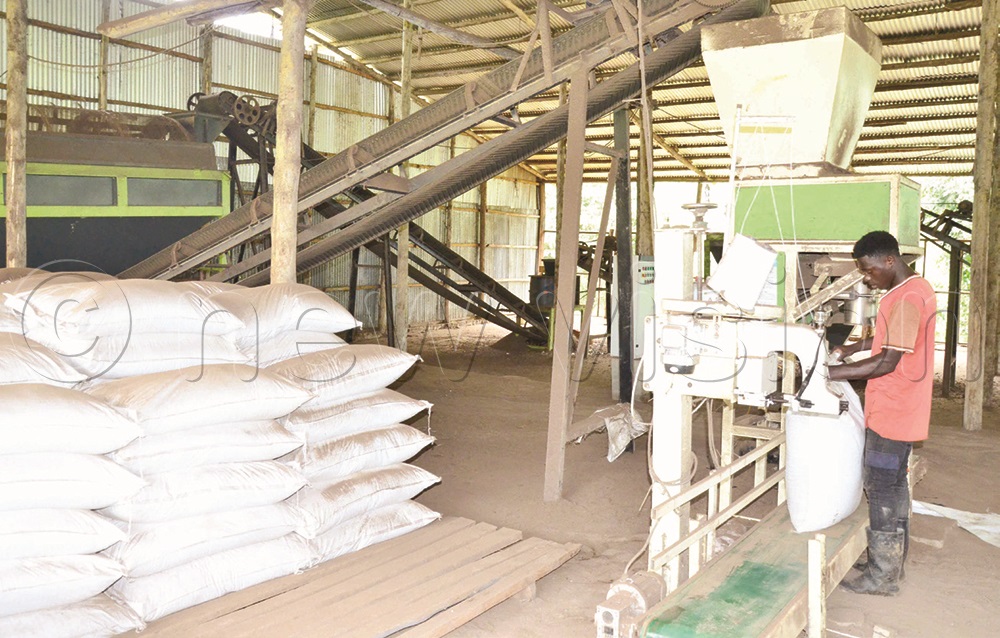For the tenth year running, Vision Group, together with the Embassy of the Netherlands, KLM Airlines, dfcu Bank and Koudijs Animal Nutrition, is running the Best Farmers Competition.
The 2025 competition will run from April to November, with the awards in December. Every week, Vision Group platforms will publish profiles of the farmers. Winners will walk away with sh150m and a fully paid-for trip to the Netherlands.
With 120,000 birds at Dem Commercial Farmers Ltd, one would expect them to have a big challenge with chicken droppings, only to find out that it is being turned into fertiliser.
“In the beginning, the droppings were one of the challenges, creating discomfort with neighbours. They used to complain about the bad smell. This compelled us to find ways of managing the droppings, birthing a new enterprise,” Grace Natukunda, the farm operations manager, explains.

Dem farm sits on 70 acres at Kazinga-Kakindu village in Mityana district, with 120,000 layer chickens generating over 12 tonnes of droppings a day. As the problem intensified, they started searching for ways of managing the waste until they learnt about turning it into manure.
This not only maintains the farm’s hygiene, but is also another revenue stream. The farm is owned by Natukunda and her brother Edwin Muhereza, the executive director.
Fertiliser production
Muhereza says they increased the number of chickens on the farm to 120,000 from 2,000 that they had started with.
By 2020, the waste had become so challenging that they had to think about how to make it useful.
He says they use agricultural lime poured in the trenches to prevent bad smell and for easy cleaning. The chicken houses are cleaned every three days.
Waste is transported using a lorry to a plant where it is processed into fertiliser and is packaged in 50kg sacks.
“From the 12 tonnes of fresh waste, we get seven tonnes of powdered fertiliser. Farmers growing bananas, coffee and vegetables buy the product,” he says.
In April, the farm completed the first field tests with the Ministry of Agriculture, Animal Industry and Fisheries to get a certificate to sell the product.
The birth of Dem Farm
Natukunda, a teacher by profession, and Muhereza, a lawyer, looked for an alternative source of income and chose farming in 2009.
The siblings started with crops like Irish potatoes, vegetables, maize and livestock that included broiler chicken and pigs.
“The returns were not proportional to the investment. We thus decided to focus on layers and pigs,” she says.
They started in 2010 with 2,000 layers and had a goal of at least 100,000 birds in 10 years. They have surpassed that goal and have 120,000 layers and harvest 3,000 trays of eggs daily.
The farm has 10 chicken houses.
Brooding
Proper brooding ensures the development of a strong immunity system, digestive system and skeletal structure, giving you a healthy and productive hen.

A Dem Farm worker packing fertiliser. The farm completed the first field tests with the agriculture ministry to get a certificate to sell the product.
“Each house has a worker who tends to aspects such as managing the warmth, feeding and feeds, water and vaccination,” Natukunda says.
The chicks are kept in the brooder for six weeks and then transferred to the main houses. Initially, they used charcoal and pots to provide warmth in the brooder. In 2020, they adopted briquettes, which proved cheaper as the stoves used are metallic.
The stoves could be used for over five cycles before replacing. To further reduce farm expenses, they are finalising the installation of bio-gas burners for warmth.
The cage system
In 2020, Muhereza says they adopted the cage system. They started with cages which take three chickens per chamber.
“We wanted to rear over 100,000 layer chickens, which called for proper space utilisation,” Muhereza says.
The cages also prevent feed wastage and keep the eggs clean.
Best management practices
To ensure proper care for the farm, each house is assigned a particular worker. Workers earn a bonus if their unit’s performance is 95% or above.
Each person works hard to guard their chicken and eggs to earn the bonus. Given that feeds account for 70% of a livestock farm’s cost, they mix their own feed.
They buy bran, which is mixed into the maize milled at the farm, as well as Hendrix concentrates manufactured by Tunga Uganda.
Farm operations
There are managerial positions at different levels, each responsible for monitoring the progress of activities on the farm, Natukunda says.
She adds that they created a WhatsApp group where all farm activities are explained.
“That is, the directors giving guidance to the workers on what they should do for the day or week. A particular poultry house will also post their report for requests, production in terms of eggs collected, activities done like vaccination, among others, every day,” Natukunda says.
The platform makes it easy for the records manager in Kampala to compile whatever happens at the farm.
The market
Natukunda says the eggs are collected every three days, where they would have collected over 9,000 trays for distribution to the customers.
“We have been with our customers for some time now. Because of that loyalty, the market for our eggs is guaranteed,” she says.
For easy accountability, no sales are made at the farm. All payments are made on the farm account.
Benefiting the community
The farm employs over 100 workers, of whom, Natukunda says, 50% are from the community.
Therefore, the farm is a source of income which is crucial in improving their living conditions. Additionally, the farm provides a market for maize grain used to make chicken feed.
They also purchase matooke, sweet potatoes and cassava to feed the employees. The farm also provides workers with food, housing and medical care.
Challenges
Natukundasays feed prices are the biggest challenge, making poultry farming expensive. However, they can manage since their suppliers for maize grain and bran, as well as concentrates, supply on credit and they pay after selling the eggs.
“We lack collaboration and co-ordination as poultry farmers. For example, during the COVID-19 pandemic, the poultry market was hit badly because eggs lacked market and farmers had to simply throw them away, yet if we had one voice, we could find a way out,” she says.
The other challenge Natukunda points out is quality day-old chicks. Some companies supply chicks which are not vaccinated.
Plans
Soon, they are planning on installing a machine to tap the liquid part from the droppings during the dewatering, which will also be an additional income.
“We still plan to increase the number of chickens to about 500,000 so that we get enough eggs to supply to our markets,” Natukunda says.
Venture into piggery
Farm co-owner Edwin Muhereza explains that they started a piggery with over 500 pigs. However, the pigs were hit by the African swine fever and they abandoned the enterprise for years.
“After the COVID-19 pandemic, I opened up a restaurant in Kampala where we served pork. This prompted us to restock the piggery unit that it now has 100 pigs. We keep a large white breed, which produces a large litter. By five to six months, they are ready to slaughter,” he says.
They set up a slaughterhouse in 2023 and slaughter three to four pigs a week, each weighing 60-80kg. The unit is separated from the poultry unit by eucalyptus trees, but also surrounded by a chain-link fence.
Relatedly, they sell one-month piglets at sh150,000 and two-month piglets at sh200,000. The unit has its designated workers.





